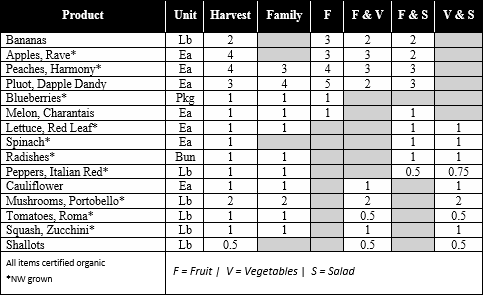When I was a kid, the strawberry bus would come by every June down to South Everett. The bus would pick up middle schoolers and high schoolers and haul them off to Marysville or Mount Vernon. As the season went on, the same bus would pick up mostly the same the kids and haul them to Mount Vernon, and they would harvest cucumbers.
Of course, machinery and/or a crew of professional seasonal migrant pickers eventually replaced kids at those jobs. I don’t remember those buses coming much after 1980 or so. Whatever caused the shift, the shift was here to stay. Many of those crops (cucumbers, berries, sweet corn) are not a major part of the acreage being farmed today.
Agriculture is not much different than other businesses. We have to deal with market changes, labor shortages, rising inputs, mechanical and technology issues. We are really not so different when it comes to the business climate. There are three areas where Agriculture diverges from many other businesses, and that is the issue of habitat, critical areas, and natural resources.
Unlike a store front, our business model is dependent upon having land to farm, and the best farmland in Snohomish County was in Marysville. The next best soils, although “heavier,” were in the valley bottoms from Monroe to Snohomish, and Arlington to Stanwood. The only farmland left in Marysville is what is north of town, and it is getting wetter by the year as the hillsides fill with houses, the water sheds down the mass of asphalt, and zero lot line houses stack up like cords of wood.
Why did we lose all that prime farmland in Marysville? We lost it because we don’t care about the long-term future of feeding people. Essentially because, Marysville was flat, didn’t flood, and relatively close to Boeing.
Today, Snohomish County still has lots of farmland, but it is in the valley bottoms where flooding makes building houses harder (not impossible). There is another pressure facing Agriculture today, besides poorly planned communities that shed their water to next parcel below them and eventually into the valleys. The pressure today comes from the Natural Resources/Restoration community. This is a well-funded group, mostly by taxpayers, who work to restore the valleys to their pre-European functions for wildlife or, more specifically, Chinook salmon.
I am all in favor of clean water and healthy functioning watersheds. I have spent 21 years of my working career farming with nature. I have tallied many a month of 40 hours or more volunteering on salmon and farming boards – working on solutions for farms and fish. It is frustrating that almost every person working on the salmon issue is paid by a Salmon Grant to be at those meetings, and all those meetings are during the day. How many working people have time to participate in government???
So why do I continue to stay at the table and be engaged? Because I believe that we can have both a vibrant farming community, and healthy ecosystems. As a local community, we are going to have to decide that Farming and habitat/Chinook Salmon can coexist. The natural resource community may not be paving over the valleys like the Development community was encouraged to do in Marysville, but the outcome will be the same without a shift in public policy. No farmland, no farmers and, quite possibly, no Chinook either.

